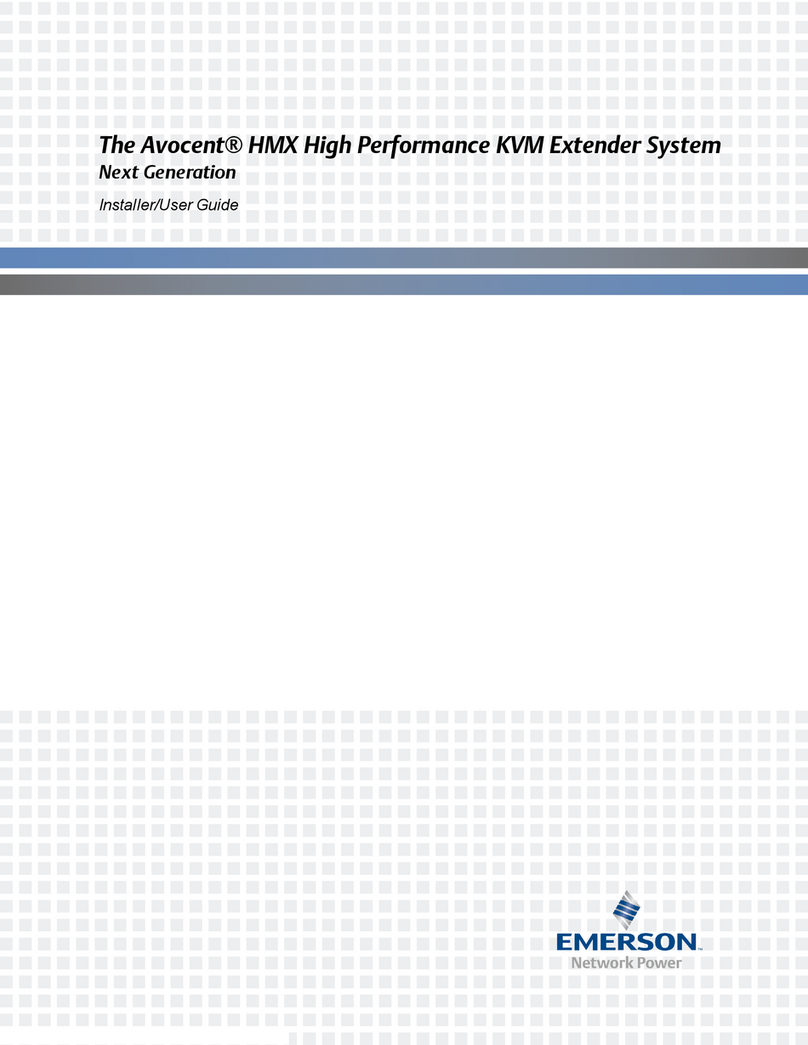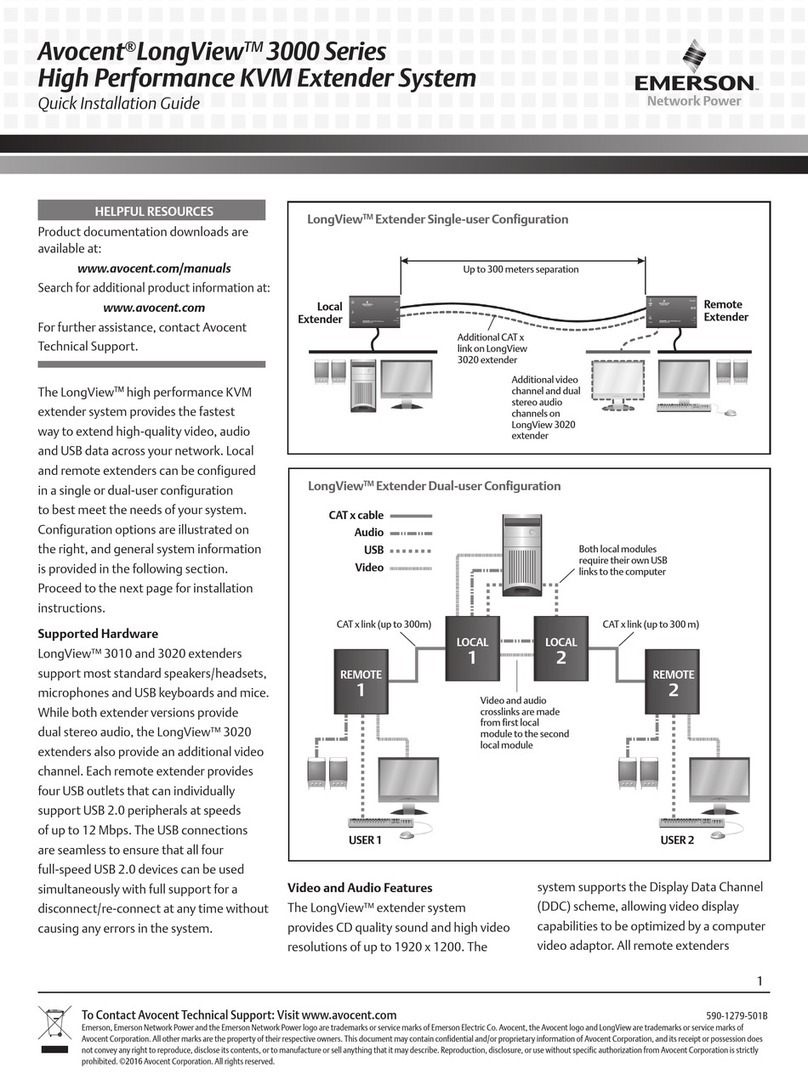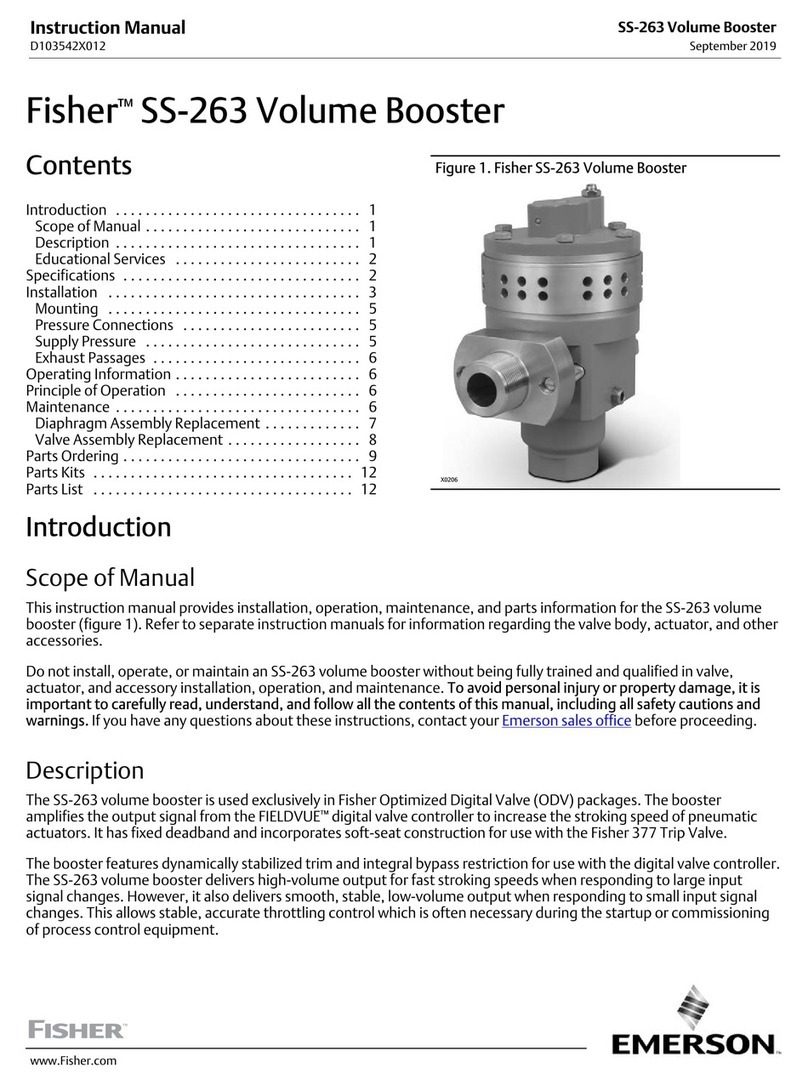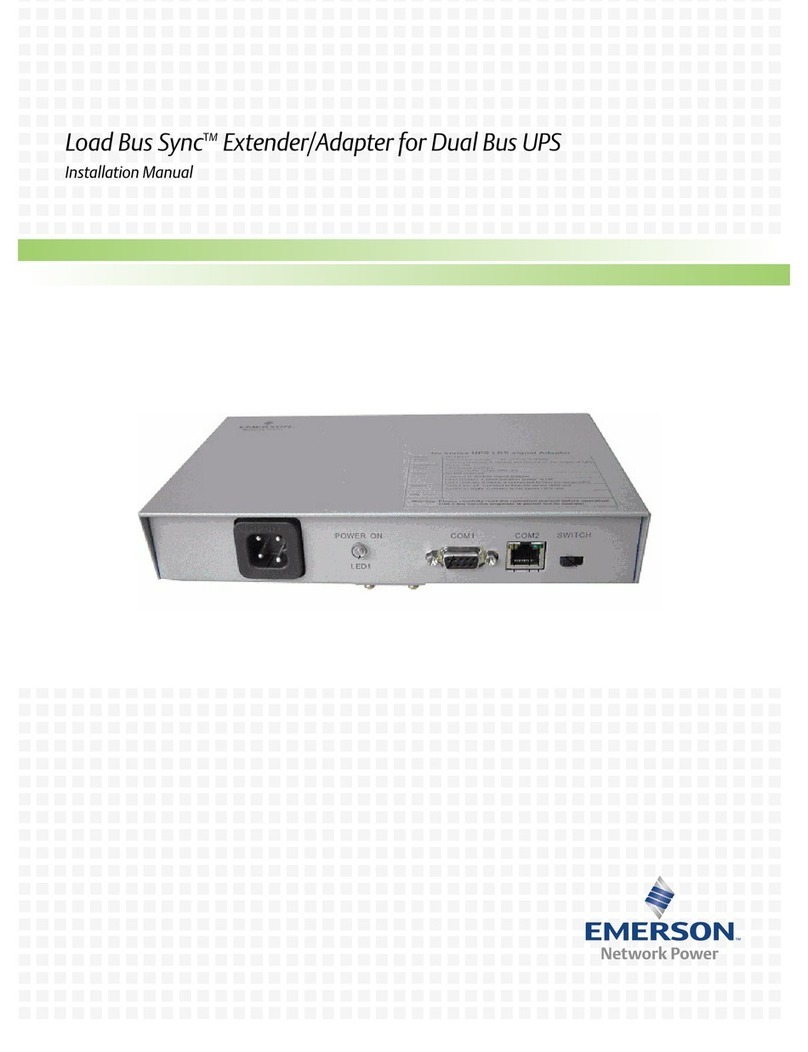
Instruction Manual
D103317X012
VBL Volume Booster
May 2017
3
Table 1. Specifications
Input Signal
Positioner output
Maximum Input Signal Pressure(1)
VBL-1 and VBL-3: 5.5 bar (80 psig)
VBL-2 and VBL-4: 10.3 bar (150 psig)
Input to Output Pressure Ratio
Fixed at 1 to 1
Supply Pressure Ranges(1)
When used in conjunction with a positioner or other
pneumatic accessory, always pipe the positioner and
booster with one common supply through a Fisher
67D, 67DR, or 95H regulator (see figure 4). A
high‐capacity filter, such as the Fisher 262K, should
be installed in the supply line to the regulator. Supply
pressure also must not exceed the maximum
pressure rating of the actuator.
Operative Temperature Limits(1)
-40 to 93_C (-40 to 200_F)
Maximum Flow Coefficients
See table 2
Connections
Input Signal: 1/4 NPT
Supply and Output Signal: 1/2 NPT
Hazardous Area Classification
Complies with the requirements of ATEX Group II
Category 2 Gas and Dust
Approximate Weight
Aluminum Body: 1.0 kg (2.2 pounds)
Declaration of SEP
Fisher Controls International LLC declares this
product to be in compliance with Article 4 paragraph
3 of the PED Directive 2014/68/EU. It was designed
and manufactured in accordance with Sound
Engineering Practice (SEP) and cannot bear the CE
marking related to PED compliance.
However, the product may bear the CE marking to
indicate compliance with other applicable European
Community Directives.
NOTE: Specialized instrument terms are defined in ANSI/ISA Standard 51.1 - Process Instrument Terminology.
1. The pressure/temperature limits in this document, and any applicable code or standard limitation should not be exceeded.
Table 2. Maximum Flow Coefficients
Instrument Supply Port Coefficients Exhaust Port Coefficients
CvCv
VBL‐1 volume booster 2.5 1.1
VBL-2 volume booster 2.5 1.1
VBL‐3 volume booster 2.5 1.8
VBL-4 volume booster 2.5 1.8
FIELDVUEtDVC6200, DVC6200 SIS, DVC6200f, DVC6200p,
DVC6000, DVC6000 SIS, DVC6000f digital valve controllers 0.37 0.31
FIELDVUE DVC2000 digital valve controller
Low pressure relay
High pressure relay
0.13
0.19
0.15
0.20
Fisher 3570 valve positioner 0.25 0.25
Fisher 3582 valve positioner 0.17 0.19
Fisher 3610J, 3610JP, 3611JP, 3620J, 3620JP, 3621JP valve positioners 0.37 0.30

































